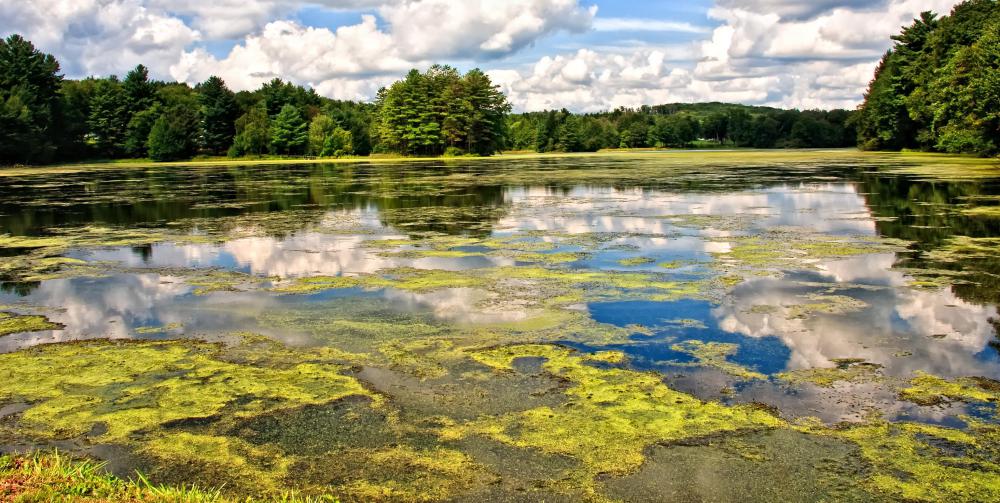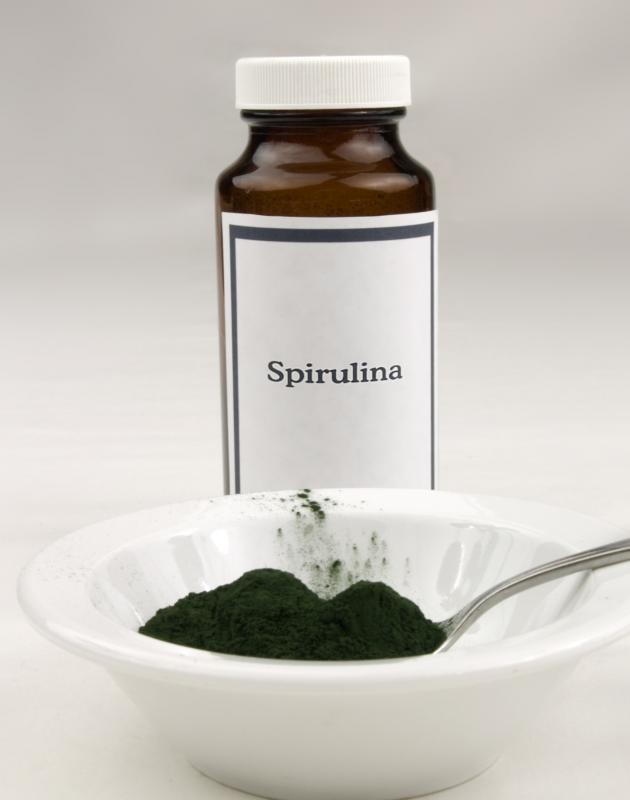At AllThingsNature, we're committed to delivering accurate, trustworthy information. Our expert-authored content is rigorously fact-checked and sourced from credible authorities. Discover how we uphold the highest standards in providing you with reliable knowledge.
What is Blue-Green Algae?
Blue-green algae, more commonly known as cyanobacteria, is one of the simplest, most common, and earliest-appearing life forms on the planet. Fossils created by colonies of cyanobacteria date back 2.8 billion years, the earliest known fossils, existing more than 2 billion years before multicellular life. Unlike other forms of "algae," like green, red, and brown algae, blue-green algae consists of bacteria -- not eukaryotic cells. Bacterial cells are about ten times smaller than eukaryotic cells and lack nuclei and complex organelles (cellular organs).
When blue-green algae first appeared on the scene about 2.8 billion years ago, it set in motion biochemical and atmospheric changes that eventually made it possible for complex life to exist. At the time blue-green algae evolved, the Earth's atmosphere was composed mostly of nitrogen (like today), but the other gas, making up about 25%, was carbon dioxide. Blue-green algae was the first life forms capable of oxygenic photosynthesis, which takes in carbon dioxide and the Sun's rays to produce energy, oxygen, and water.

After working for about 500 million years, the blue-green algae transformed the atmospheric carbon dioxide into mostly oxygen. This made much for free energy available for any subsequent organisms, but killed off all the anaerobic (air-hating) bacteria that had dominated the planet before. Because of the massive die-off, this event is known as the Oxygen Catastrophe. Evidence of this event is left behind in the form of banded iron formations, rocks consisting of bands of oxidized iron compounds alternating with iron-poor minerals such as shale. These iron compounds formed when cyanobacteria were locking up iron in compounds which then sunk to the sea floor.

Cyanobacteria at mainly found in the oceans, where they are primary producers and are eaten by many other organisms. The blue-green tinge they give the water is the source of their name, blue-green algae. The green color comes from chlorophyll in their cells. In the oceans, where there is ample nitrogen available in seawater and carbon dioxide available from the atmosphere, the main limiting factor in their growth is iron. Some scientists have begun to experiment with fertilizing the oceans with iron to boost their growth, which can sequester carbon dioxide from the atmosphere and curb global warming.

Cyanobacteria are also well-known for their ability to fix nitrogen -- or convert it from gas form into solid form -- another essential feature of any ecosystem. All organisms need fixed nitrogen sources to survive. Other organisms convert fixed nitrogen compounds into protein and nucleic acids.
Frequently Asked Questions
What exactly is blue-green algae?
Blue-green algae, also known as cyanobacteria, are microscopic organisms found in freshwater and marine environments. They are unique in that they function like algae and bacteria, performing photosynthesis to produce their own food, which contributes to their blue-green color. Despite their name, they are more closely related to bacteria than to true algae.
Is blue-green algae harmful to humans or animals?
Some species of blue-green algae can produce toxins that are harmful to both humans and animals. Exposure to these toxins can lead to health issues ranging from skin irritation to serious neurological effects. According to the CDC, ingestion of water contaminated with these toxins can cause symptoms like nausea, vomiting, and, in severe cases, liver failure.
How can you tell if a body of water has a blue-green algae bloom?
A blue-green algae bloom can often be identified by the appearance of the water, which may look like green paint or pea soup. The water may also have a foul odor. Blooms typically occur in stagnant water bodies during warm weather with high nutrient levels, such as from agricultural runoff, according to the EPA.
What conditions lead to blue-green algae blooms?
Blue-green algae blooms are encouraged by warm temperatures, sunlight, and high nutrient levels, particularly phosphorus and nitrogen. These nutrients often enter waterways through runoff from fertilized agricultural land, urban areas, and wastewater. Climate change is believed to exacerbate the frequency and intensity of these blooms, as reported by the Intergovernmental Panel on Climate Change.
Can blue-green algae be used for any beneficial purposes?
Yes, blue-green algae have several beneficial uses. They are utilized in the production of natural health supplements due to their high nutrient content, including proteins, vitamins, and antioxidants. Additionally, they are being researched for biofuel production and are used in wastewater treatment to remove excess nutrients and heavy metals, as noted by the Biotechnology Advances journal.
How can blue-green algae blooms be prevented or controlled?
Preventing blue-green algae blooms involves reducing nutrient runoff into waterways through better agricultural practices, such as using less fertilizer and creating buffer zones with vegetation. Controlling existing blooms can be challenging, but methods include aerating the water to reduce stagnation and applying algaecides with caution, as they can also harm other aquatic life, as per the EPA's guidelines.
AS FEATURED ON:
AS FEATURED ON:













Discussion Comments
Blue green algae sounds like it's pretty important for our current environment too. I think that scientists should definitely continue in their efforts to stimulate it's growth in our oceans.
I'm always amazed at how intertwined our ecosystems are. One small thing (like blue green algae) can have a seriously large effect on the entire world. I think this is a really good argument against polluting the ocean-obviously the health of the oceans affects how much oxygen is in the air worldwide.
@Monika - That's a good idea, in theory. However, I doubt there will be human life on this planet in 500 million years.
Anyway, blue green algae is pretty cool stuff. I didn't know this until recently, but you can also take a blue green algae supplement. Supposedly it's a superfood with tons of nutrients, so it has anti-aging and antioxidant effects. I know it comes in powdered form, so you could easily add blue green algae to a smoothie or something like that.
Honestly, I've been meaning to try this stuff for quite awhile, but I've never gotten around to it. I think I'm going to add it to my grocery list for my next trip to the store!
Wow. It sounds like wild blue green algae is pretty much essential to life on this planet as we know it. I had no idea that blue green algae was responsible for making our planet habitable for other lifeforms.
This makes me think that researchers who focus on looking for life on other planets should maybe look for planets that have a lot of algae. If we pay attention, maybe life will evolve on those planets at some point in the next 500 million years!
Post your comments